Gokaku Kigan at the Noten Okami Shrine
2024/01/06
As with much of the rest of the world, Japan is a country where examinations are a culturally mandated right-of-passage in life for achieving one’s goals and finding success in both the academic and professional world. However, it may be fair to say that these tests hit a bit harder at a younger age in Japan compared to other countries – high school is not considered compulsory education here, so much like university, passing a test to enter your desired high school of choice is often a difficult fact of life facing most Japanese teens. Beyond high school, university entrance exams are also infamous for their difficulty here, and even job hunting can involve various exams for competitive positions.
Yes, it is fair to say Japan is a country that is very test-oriented; so where should one go when seeking to find success in not only passing the exam, but beating out the competition? There is of course the lucrative cram-school industry that steals countless hours of many a student’s life, but beyond that you will also find various shrines and temples that specialize in a different sort of aid known as a “gokaku kigan” or “prayers for exam passing.” These locations become especially busy during the first months of the year, when many entrance exams are held. This blog will take a brief look at one shrine believed to be inhabited by a deity with the power to help the human mind deal, Noten Okami in Yoshino.

Looking over the mountain temple district of Yoshinoyama, where the Noten Okami Shrine is located.
Yoshinoyama’s Noten Okami Shrine
Located up a narrow mountain valley in the southern town of Yoshino, the Noten Okami Shrine of the Yoshinoyama mountain temple district is scenically beautiful as it is fascinating. The story of its founding goes back to a head abbot of Kinpusen-ji Temple, who was said to have been searching for a location that was suitable to develop for waterfall training (an ascetic practice associated with the temple’s Shugendo faith). During his exploration of the area he came upon a snake whose head had been split in two, killed by local children in the area. Feeling pity for the creature, the abbot respectfully buried the snake in the valley where he found it and chanted sutras. From that day forward, the snake was said to have appeared in the abbot’s dreams, expressing gratitude and declaring that it was a guardian deity for the head. The snake also returned in its living form and met the abbot, who advised that the snake take shelter in a spot where there is now a hall built into the side of the mountain. From these experiences, the abbot had the deity enshrined in the valley as Noten Okami in connection with the Kinpusen-ji Temple complex above.
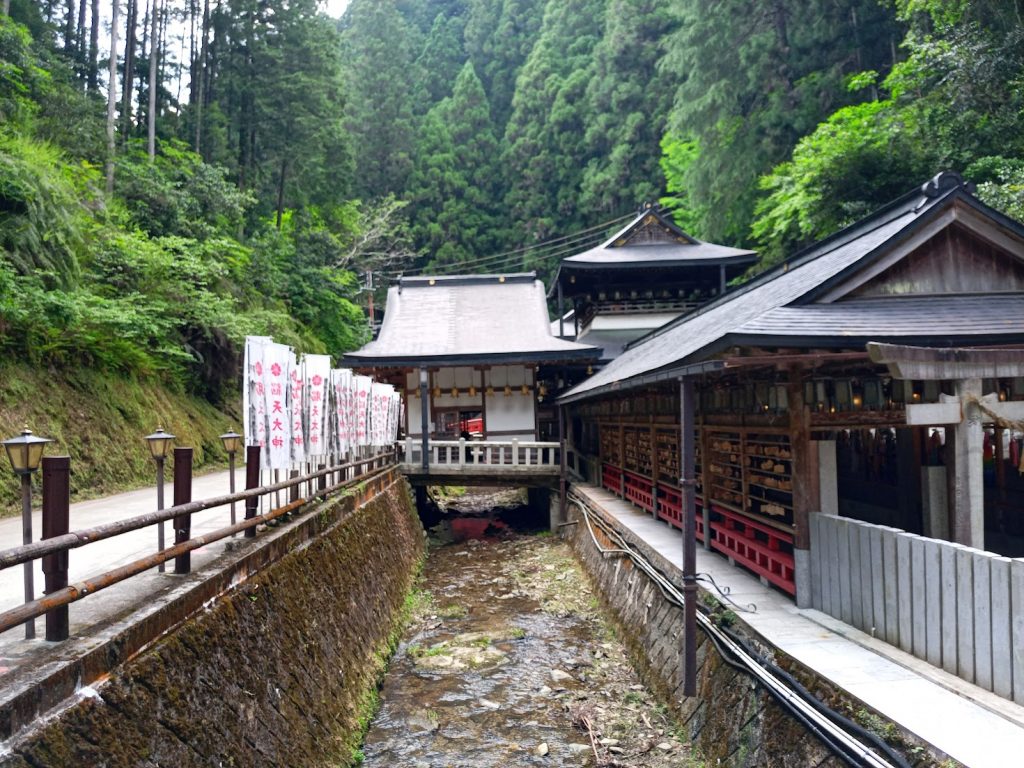
Yoshino’s Noten Okami Shrine.
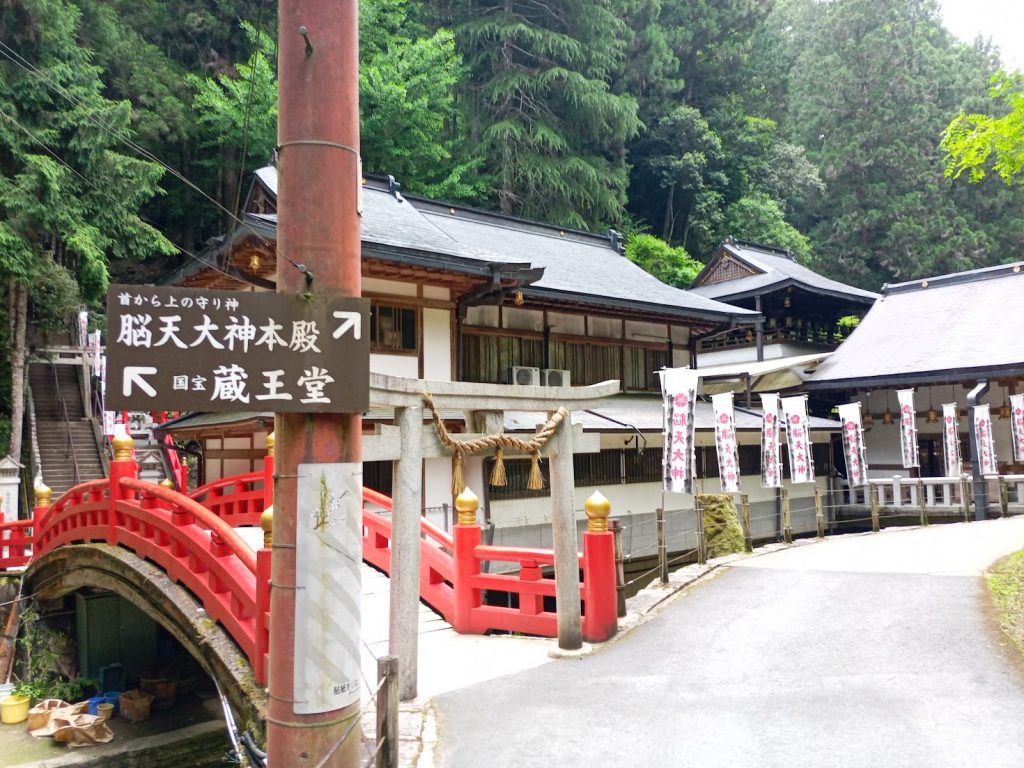
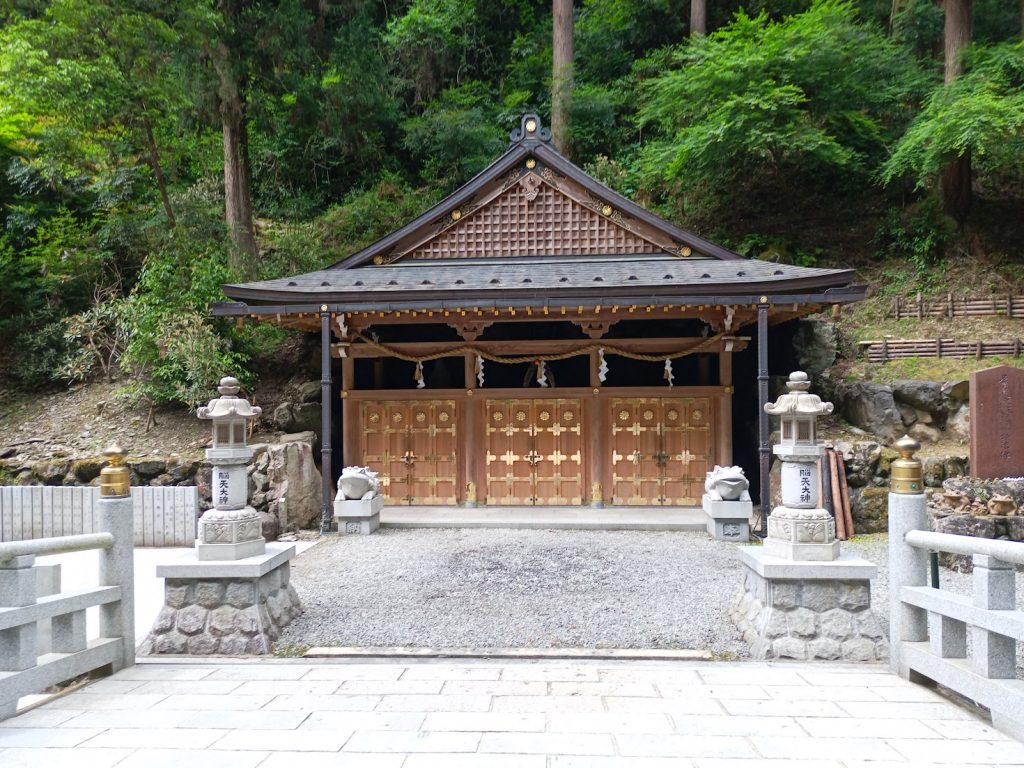
The location of this hall, which usually is open during business hours, is where it is said that the abbot told the reborn snake deity to take shelter.
Because the deity enshrined here is associated with the protection of the head, Noten-Okami is a popular spot to visit for those who wish to make gokaku prayers for test passing or to address any mental ailments, for that matter. The shrine’s association with the local indigenous faith of Shugendo (in fact, Noten-Okami is said to be a manifestation of the Shugendo deity Zao-gongen) also adds to its uniqueness – the river which flows under the shrine is utilized for ascetic practices in the shrine’s takigyoba, or “waterfall training space.” Practicing austerities in nature is a core tenant of the Shugendo faith and this tradition feels somewhat reflected in the design and location of the shrine. A long stairway of about 500 steps connects the Noten-Okami Shrine to the ridgeline above, a space once used by female yamabushi – the term of Shugendo practitioners – as a mountain path for shugyo ascetic training. The yamabushi priests of the shrine are also very welcoming to visitors and will often give visitors hard-boiled eggs to honor the split-headed snake deity who is worshipped here.
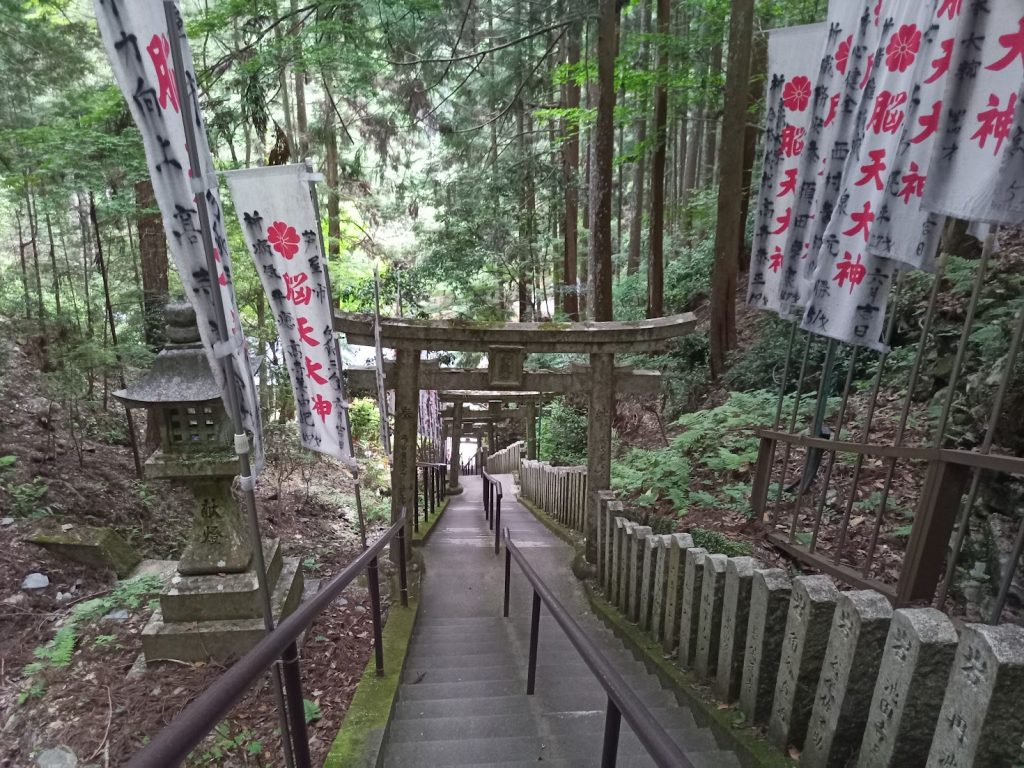
The steep stairway which connects the Noten Okami Shrine to Kinpusen-ji Temple on the ridgeline above.
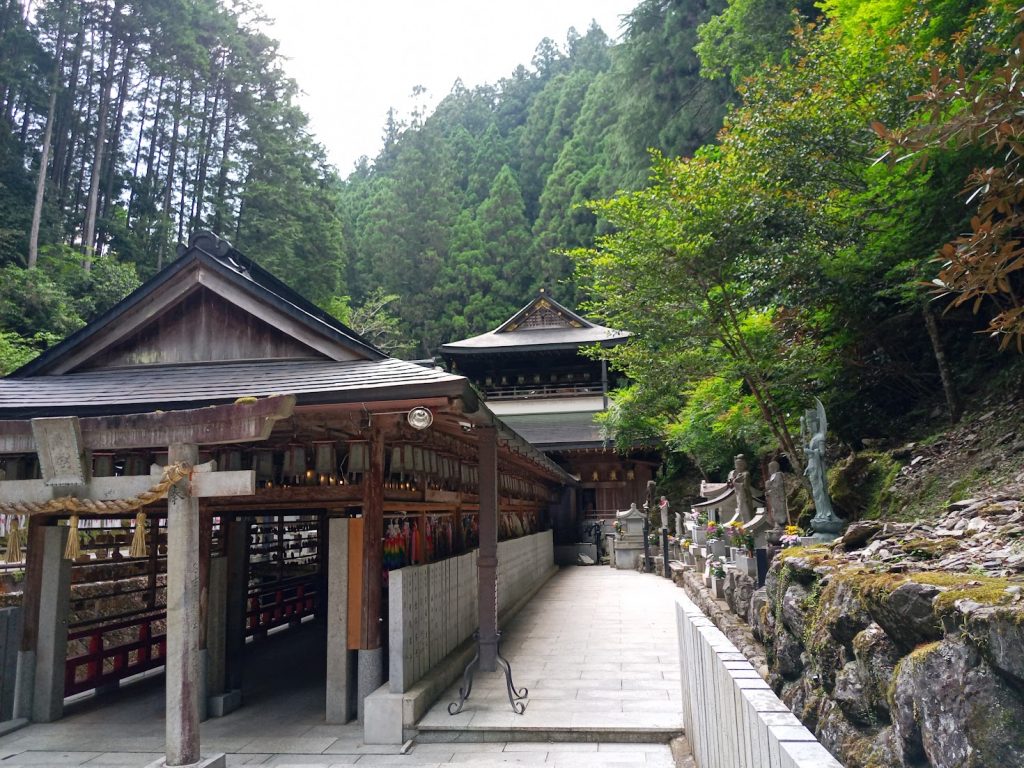
The long outdoor hallway pictured here is where prayer placards are hung in the shrine. A common method of physical prayer performed here is to walk loops in this hallway while focusing on one’s desire.

En no Gyoja, the enigmatic figure who is credited with helping to create the Shugendo faith in these mountains roughly 1,300 years ago. This statue is one of many interesting works of religious art found along the path between Kinpusen-ji Temple and the Noten Okami Shrine.
Noten Okami is just one of many important locations which offer spiritual support to those who are facing the daunting examinations which face most who grow up, become professionals, and start families in Japan. Anybody can visit this shrine to pray on behalf of themselves or someone else for that matter; it is not uncommon to see the friends and family of someone facing an exam to visit a place like Noten Okami as a form of support. It is also worth noting that praying for such things as success in academics is not limited to shrines and temples that are specifically associated with or famous for gokaku kigan prayers, though they are especially popular due to enshrining deities that are believed to have direct power over such things. Abe Monju-in Temple in Nara Prefecture’s Sakurai City enshrines the famous Heian period scholar and Daoist Abe no Semei (921 -1005), who was thought to be an academic genius of his time. This historical connection has made the temple a very popular location for praying for success in passing exams in Nara Prefecture. For more info on Abe Monju-in, see my blog post about it here.
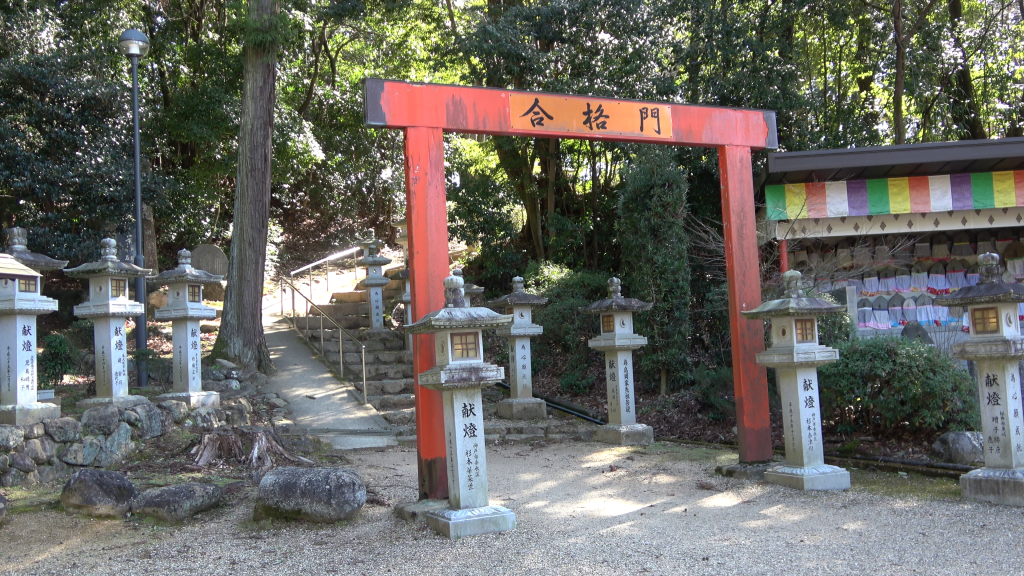
Gokaku Gate (“exam passing gate”) at Abe no Monju-in Temple in Sakurai City
Throughout your travels in Japan you may come across many temples and shrines associated with gokaku kigan prayers (look for the kanji “合格”.) If you or a friend / loved one are facing a difficult upcoming test of some kind, why not offer a prayer yourself at one of these temples or shrines? Perhaps consider making the trip out to Yoshino Town in Nara to visit the beautiful Noten Okami Shrine. You may find that at least it makes you feel a little less alone in facing the challenges of the competitive modern day society we all live in.
The Noten Okami Shrine can be easily accessed by vehicle via a narrow road which winds its way Jigoku-dani Valley from the Yoshino River below. For those without a vehicle, I recommend going on foot from the ridgeline above, directly down from Kinpusen-ji Temple’s Zao-do Hall. Kintetsu Yoshino Station is the common access point for Yoshinoyama, and from there it is about a 25 minute walk to get up to Kinpusen-ji’s Zao-do Hall, and another 15 minute walk in the southeast direction to get down to the Noten Okami Shrine below (trust me, it’s worth the effort!)
For more information about this shrine or tours of the Yoshino area, feel free to contact us anytime at Kansai Nara Treasure Travel.

01
FIND YOUR FAVORITE
TRIP ON OUR WEBSITE.
SEND US AN INQUIRY.

02
PERSONALIZE THE TRIP
TO YOUR INTERESTS
WITH OUR CONSULTANT.

03
20% DEPOSIT TO CONFIRM.
BALANCE PRIOR TO ARRIVAL.
PAYMENT BY CC OR TT.

04
WE WILL
MEET YOU
AT THE AIRPORT.

05
DISCOVER THE
TREASURES!